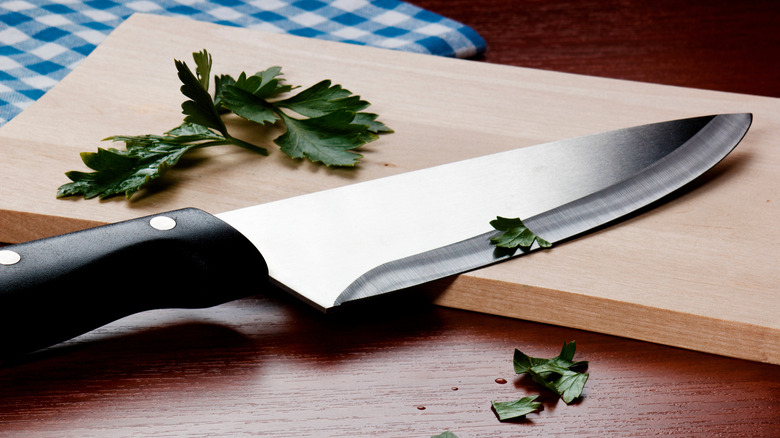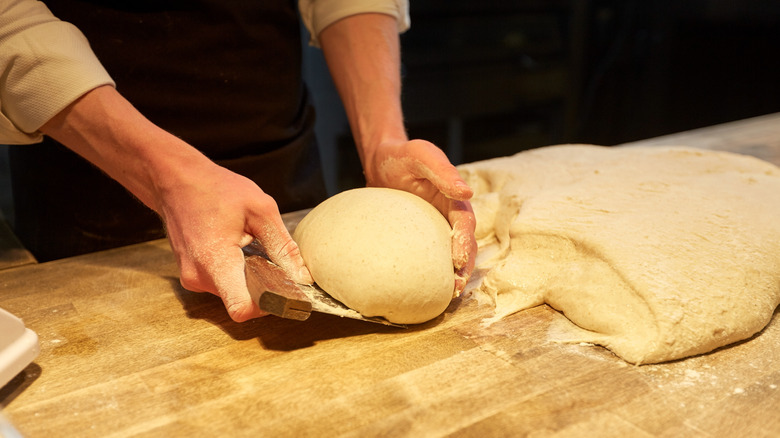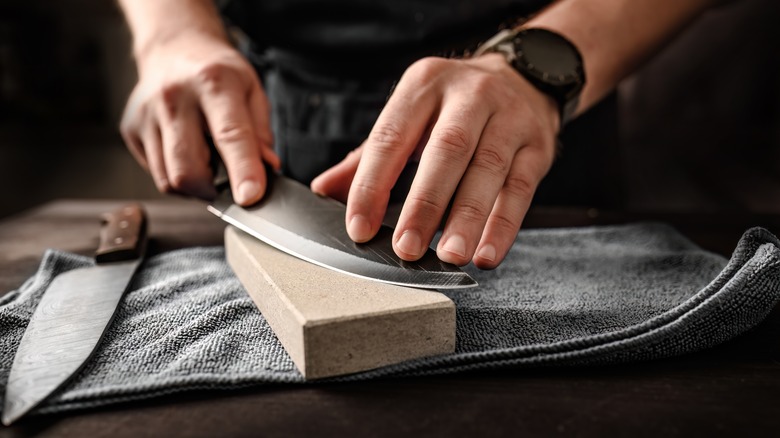You're Using Your Knife To Scoop Ingredients Wrong. Here's Why
We're all guilty of bad habits in the kitchen, from rinsing meat, which only spreads contamination everywhere, to tasting batters with raw ingredients, which can contain salmonella and E. Coli. But there's one bad habit that's particularly prevalent: using the sharp edge of your knife to scoop up ingredients.
When you scrape your knife across your cutting board with the sharp edge, you're risking the chance of cutting yourself. Even if the knife is somewhat dull, all you need to do is bump your arm against a wall while cradling your ingredients, and you could easily slice open your hand. And if you keep your knives as razor sharp as they should be, you could slice your hand open before you even lift your ingredients off the cutting board. But an even more common consequence of scooping your ingredients this way is compromising the edge of your knife. Knives are meant to cut with a forward-and-back motion, so the side-to-side motion pushes the edge out of alignment, dulling the blade more severely than correct usage ever could.
Better ways to scoop up ingredients
The simplest alternative to using the sharp edge of a knife for ingredient scooping is using the dull side instead. That's right — the problem is solved with a simple rotation. However, this creates the issue of the sharp edge now being dangerous to those who may be around you. If you're determined to use the dull side, you can limit the danger by briefly scraping your ingredients off your cutting board instead of scooping them up and walking around the kitchen with them.
The best solution to this common mistake, however, requires an extra piece of equipment: a bench scraper. As the name suggests, these simple, flat sheets of metal with handles are designed to scrape up ingredients. Some even have raised edges on the side to better hold chopped up ingredients. They're also useful for cutting through and handling soft foods such as butter and dough. Don't confuse a bench scraper with a bowl scraper, though. Bowl scrapers are more pliable so they can scrape a bowl clean, and that lack of support can see your ingredients accidentally flopped onto the floor.
Other tips to keep your knives sharp
There are a few other methods you can employ to avoid ruining your knives. The absolute most important is to hone and sharpen your knives. Honing keeps an already sharp edge straight, helping that edge last longer, and should be done before every use. Sharpening, by comparison, creates a new edge by removing some metal. Because sharpening gets rid of material, it should only be done once or twice a year and only after honing is no longer maintaining a sharp edge.
The other tips revolve around properly cleaning and storing your knives — two tasks which are commonly neglected. A good knife should never be put in a dishwasher because the knife could rust or corrode. Plus, the intense physicality of wash cycles can move a knife, potentially forcing its edge against plastic or metal, causing damage to both the knife's edge and the dishwasher. For storage, one of the best solutions is a magnetic knife strip. Magnetic strips are excellent for ease of access, but you may dislike the aesthetics or not have wall space for them. If this doesn't work, then you can consider an in-drawer organizer or sheathes. Never place an unsheathed knife loosely in a drawer because the rattling around can ruin the edge and it's too easy to accidentally slice your hand open when reaching in.


